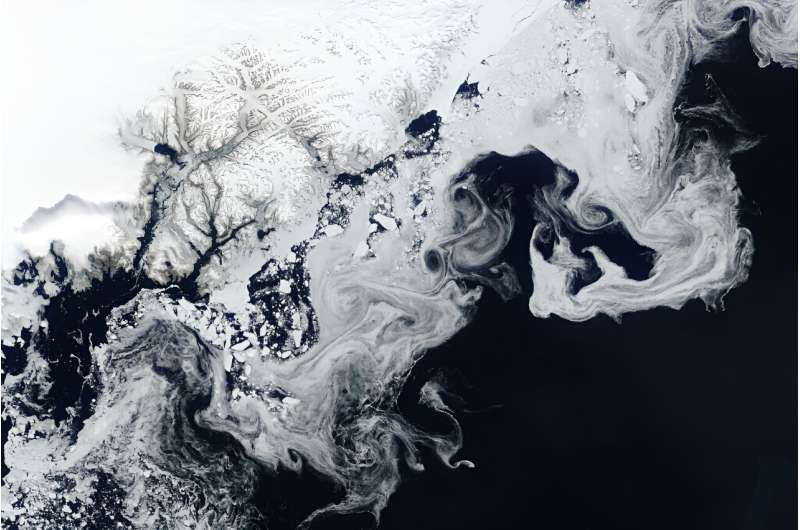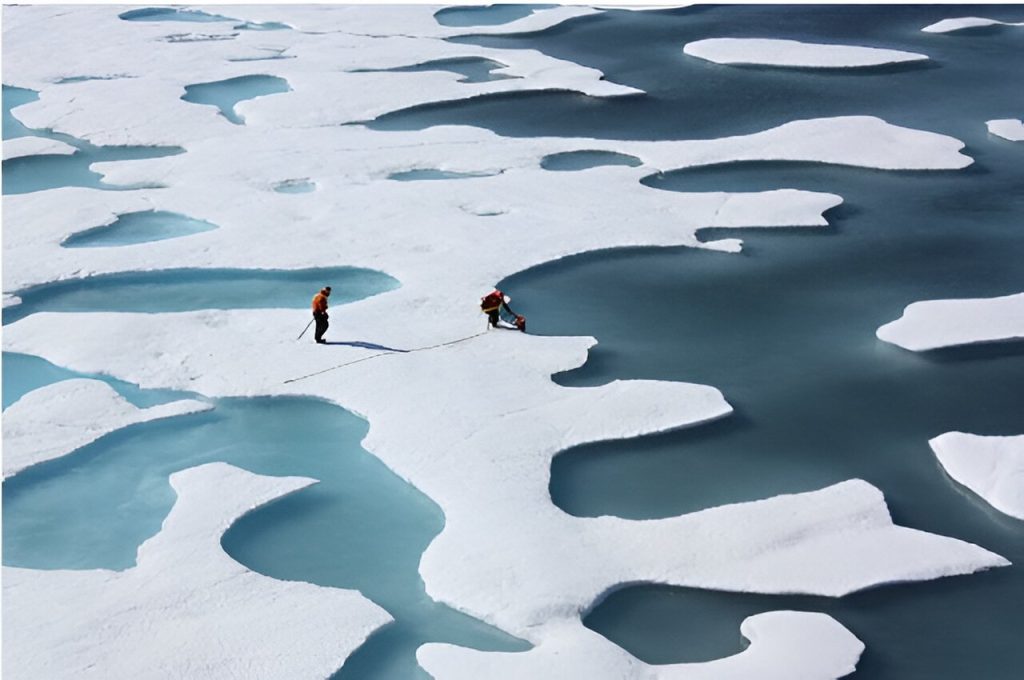Melted water pools darken the surface of the sea ice, reducing its cooling power. Photo credit: NASA Earth Observatory
A new study led by scientists at the University of Michigan finds that as sea ice disappears and reflectivity declines, the Arctic has lost about a quarter of its cooling power since 1980, and the world has lost up to 15 percent.
Using satellite measurements of cloud cover and solar radiation reflected by sea ice from 1980 to 2023, the researchers found that the rate of decline in sea ice cooling is roughly twice the rate of decline in annual average sea ice extent in both the Arctic and Antarctic. The additional warming impact of this change in sea ice cooling is near the upper end of climate model estimates.
“we Climate Simulation “Quantifying how melting sea ice affects the climate typically requires a century of simulations before we have an answer,” said Marc Flanner, professor of climate and space science and engineering and corresponding author of the study. Published in Geophysical Research Letters“We’re now at the point where we have satellite data records long enough that we can infer sea ice climate feedbacks through measurements.”
The Arctic has seen the greatest and most steady decline in sea ice cooling since 1980, while until recently Antarctica appeared to be more resilient to climate change: Antarctic sea ice extent remained relatively stable from 2007 through the 2010s, and the cooling potential of Antarctic sea ice was actually on an upward trend during that time.

Chunks of sea ice off the coast of Greenland appear as swirling white swirls in this image taken from the Terra satellite. As the ice thins and darkens, it reflects less sunlight than a solid ice sheet, accelerating global warming. Image courtesy of NASA’s Earth Observatory.
That view suddenly changed in 2016, when one of the continent’s largest ice shelves melted over an area larger than Texas. Antarctic sea ice was also lost at that time, and its cooling power has not been restored, a new study says. As a result, 2016 and the seven years that followed had the weakest cooling effect on global sea ice since the early 1980s.
Not only is ice disappearing, but the remaining ice is becoming less reflective as rising temperatures and increased precipitation create thinner, wetter ice and more melted ponds with lower reflectivity. solar radiationThis effect is most noticeable in the Arctic, where sea ice becomes less reflective during the sunniest parts of the year, and new research suggests that this may also be an important factor in the Antarctic, in addition to reducing sea ice extent.
“The change in Antarctic sea ice since 2016 increases the warming feedback from sea ice loss by 40 percent. If we do not take into account this change in the radiative effect of Antarctic sea ice, we may miss a significant part of the global energy absorption,” said Alisher Daspayev, a doctoral student in physics and lead author of the study.
The team hopes to provide an updated estimate of sea ice cooling. Power Climate feedback from the low-reflectivity ice will also be provided to the climate science community through a website that will be updated as new satellite data becomes available.
“Climate change adaptation planning should incorporate these new numbers as part of an overall calculation of how fast and how widespread the effects of cryospheric radiation will be. cooling “The losses will be felt in the Earth’s climate system,” said Aku Riihela, research professor at the Finnish Meteorological Institute and co-author of the study.
For more information:
A. Duspayev et al., “Radiative Effect of Earth’s Sea Ice from 1980 to 2023” Geophysical Research Letters (2024). Posted on: October 29, 2024
Provided by
University of Michigan
Quote: New study finds that sea ice cooling power is declining faster than its extent (July 17, 2024) Retrieved July 18, 2024 from https://phys.org/news/2024-07-sea-ice-cooling-power-waning.html
This document is subject to copyright. It may not be reproduced without written permission, except for fair dealing for the purposes of personal study or research. The content is provided for informational purposes only.


